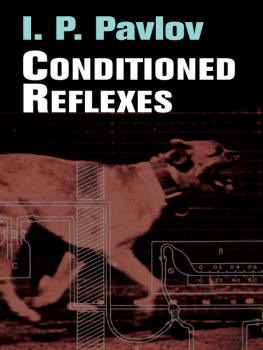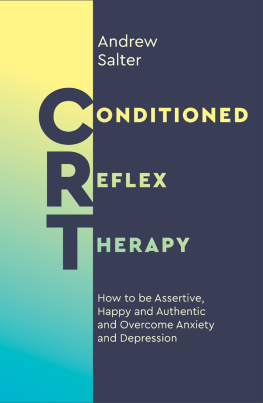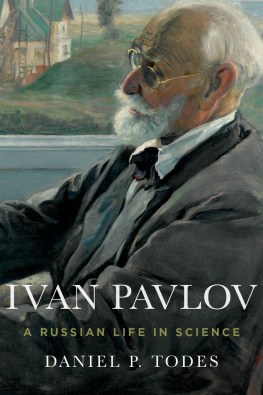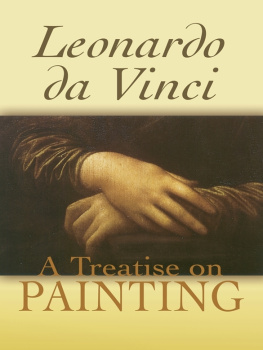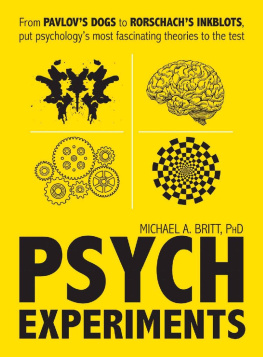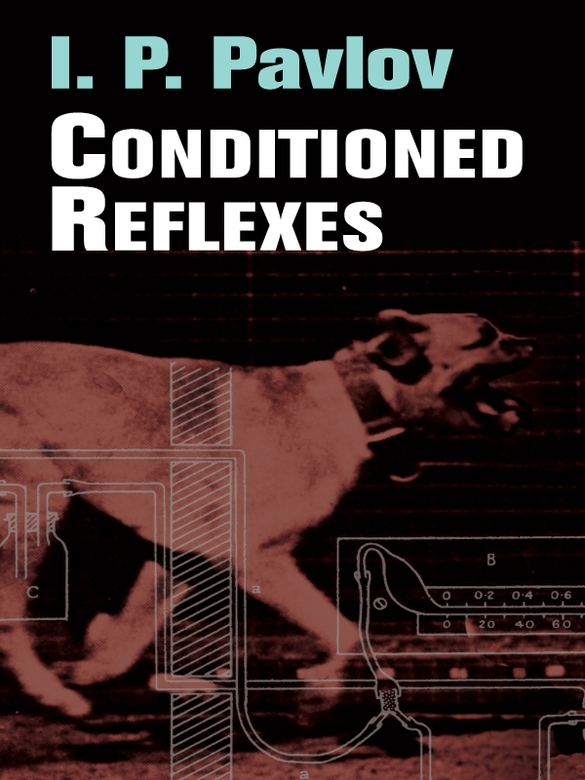AUTHORS PREFACE
I AM deeply sensible of my good fortune that this book should appear in the English language through the assistance of the Royal Society of London. Without their material help the presentation of the book in its English form could not in the first place have been attempted. I desire to express to them my deepest gratitude.
I count it a great stroke of luck for the book that the preparation of the English edition was carried out entirely under the supervision of, and in part made by, my young friend Dr. Anrep, formerly an active collaborator in the work described in its pages. Dr. Anreps task has not been an easy one, and it has been fraught with responsibility, as practically at every step he has had to adapt a vast new terminology. I wish to give him also my hearty thanks.
I. P. P.
PETROGRAD, 14 th July, 1926.
BIBLIOGRAPHY
THE following bibliography comprises all the published researches upon the physiology of conditioned reflexes performed in my own laboratories in Petrograd. The first paper giving a more or less systematic description of natural conditioned reflexesthen called psychic reflexes was published by Dr. Wolfson in the form of a thesis entitled Observations upon Salivary Secretion (Petrograd, 1899). The term conditioned reflex was first used in print by Dr. Tolochinov, who completed his experiments in 1901 and communicated the results at the Congress of Natural Sciences in Helsingfors in 1903.
The bibliography is divided into twenty-three sections. This division has been made for the convenience of those who wish to obtain a preliminary acquaintance with one or another aspect of the subject. The titles of papers quoted in more than one section are given in full in that section to which their main part belongs. Since the papers referred to in one section treat also of other aspects, a detailed knowledge can be achieved only by reading the main bulk of the literature. In each section the literature is set down in chronological order. Many of the experiments quoted in these lectures were taken from researches which have only recently been completed and are not yet published, or which are still in progress. These could not, therefore, be included in the bibliography.
I. GENERAL
- (1) Pavlov,I. P. Twenty years of objective study of the higher nervous activity (behaviour) of animals. State publication, 3rd edition, 1925. Articles, Nos. 1, 2, 3, 4, 7, 9, 10, 11, 13, 17, 20, 21, 23, 26, 29, 31, 33, 35.
II. METHODS
- (1) Pavlov, I. P. Twenty years of objective study of the higher nervous activity of animals. Article, No. 12.
- (2) Hanike, E. A. The construction of sound-proof chambers. Bulletin of the Scientific Institute of Lesgaft, vol. v. 1922.
- (3) Hanike, E. A. Upon the production of pure tones. Archive of Biological Sciences, vol. xxiii. Nos. 4-5, 1924.
- (4) Podkopaev, N. A. The technical methods employed in the study of conditioned reflexes. Petrograd, 1926.
III. EXTERNAL INHIBITION
- (1) Babkin, B. P. See section IVa (3) chapter vii.
- (2) Vassiliev, P. N. The action of extraneous stimuli upon established conditioned reflexes. Proc. Russian Med. Soc. in Petrograd, vol. 73, 1906.
- (3) Mishtovt, G. V. Development of inhibition of an artificial conditioned reflex (auditory) by means of different stimuli. Thesis, Petrograd, 1907; Preliminary communication in the Proc. Russian Med. Soc. in Petrograd, vol. 74, 1907.
- (4) Perelzweig, I. J. See section IVa (4) chapter iv.
- (5) Kasherininova, N. A. See section X(1).
- (6) Nikiforovsky, P. M. An interesting form of dis-inhibition of conditioned reflexes. Proc. Russian Med. Soc. in Petrograd, vol. 76, 1909.
- (7) Bilina, A. S. The simple inhibition of conditioned reflexes. Thesis, Petrograd, 1910.
- (8) Egorov, J. E. The influence of different alimentary conditioned reflexes one upon another. Thesis, Petrograd, 1911.
- (9) Savich, A. A. Further contributions to the study of the influence of conditioned reflexes one upon another. Thesis, Petrograd, 1913.
- (10) Rosova, L. V. Interaction between different forms of external inhibition of conditioned reflexes. Thesis, Petrograd, 1914.
- (11) Foursikov, D. S. Effect of external inhibition upon the development of differentiation and of a conditioned inhibitor. Russian Journal of Physiology, vol. iv. 1922.
- (12) Foursikov, D. S. Effect of the investigatory reaction upon the development of a conditioned inhibitor and of differentiation. Russian Journal of Physiology, vol. iv. 1922.
IV. INTERNAL INHIBITION
( a ) Extinction
- (1) Tolochinov, I. E. Contributions a Ltude de la physiologie et de la psychologie des glandes salivaires. Forhndlingar vid Nordiska Naturforskare och Lkaremtet. Helsingfors, 1903.
- (2) Boldirev, P. N. The development of artificial conditioned reflexes and their properties. Proc. Russian Med. Soc. in Petrograd, 1905-1906.
- (3) Babkin, B. P. A systematic investigation of the higher nervous (psychic) functions in the dog. Thesis, Petrograd, 1904.
- (4) Perelzweig, I. J. Contributions to the study of conditioned reflexes. Thesis, Petrograd, 1907.
- (5) Zeliony, G. P. See section VIII (1).
- (6) Kasherininova, N. A. See X (1) chapter 8.
- (7) Eliason, M. M. Restoration of extinguished reflexes by the use of unconditioned stimuli. Proc. Russian Med. Soc. in Petrograd, vol. 74, 1907.
- (8) Zavadsky, I. V. See IVc (2).
- (9) Volborth, G. V. See XX (4).
- (10) Gorn, E. L. See IVB (5).
- (11) Potehin, S. I. Contributions to the physiology of internal inhibition of conditioned reflexes. Thesis, Petrograd, 1911; Preliminary communication, Proc. Russian Med. Soc. in Petrograd, vol. 78, 1911.
- (12) Degtiareva, V. A. See IVD (7).
- (13) Kogan, B. A. See V (4).
- (14) Chebotareva, 0. V. See IVD (5).
- (15) Ten-Cate, J. J. Contributions to the study of irradiation and concentration of extinctive inhibition. Bulletin of the Institute of Lesgaft, vol. 3, 1921.
- (16) Podkopaev, N. A. See V (11) and (12).
- (17) Frolov, G. P., and Vindelband, O. A. A special case of extinction of an artificial conditioned reflex. Commun. at 38th meeting of Petrograd Physiol. Soc., 1923.
- (18) Popov, N. A. Extinction of the investigatory reflex in the dog. Russian Jour. Physiol., vol. iii. 1923.
- (19) Neitz, E. A. Mutual interaction of conditioned reflexes. Bulletin of Military Med. Acad., 1908; Preliminary Commun. Proc. Russian Med. Soc. in Petrograd, vol. 74, 1907.
- (20) Pimenov, P. P. See IVE (7) chapter 2.
- (21) Makovsky, I. S. See XII (4).
- (22) Valkov, A. V. A special case of irradiation of extinctive inhibition. Commun. at 60th meeting of Petrograd Physiol. Soc., 1924.
- (23) Popov, N. A. Extinction of the investigatory reflex in the dog. Russian Jour. Physiol., vol. iii. 1923.
- (24) Frolov, G. P., and Windelband, O. A. A special case of extinction of an artificial conditioned reflex. Archive of Biological Sciences, vol. xxv. Nos. 4 and 5, 1926.
(b) Differentiation
- (1) Zeliony, G. P. Contribution to the problem of the reaction of dogs to auditory stimuli. Thesis, Petrograd, 1907 ; Prelim. Commun. Russian Med. Soc. in Petrograd, vol. 73, 1906.
- (2) Beliakov, V. V. Contributions to the physiology of differentiation of external stimuli. Thesis, Petrograd, 1911.

